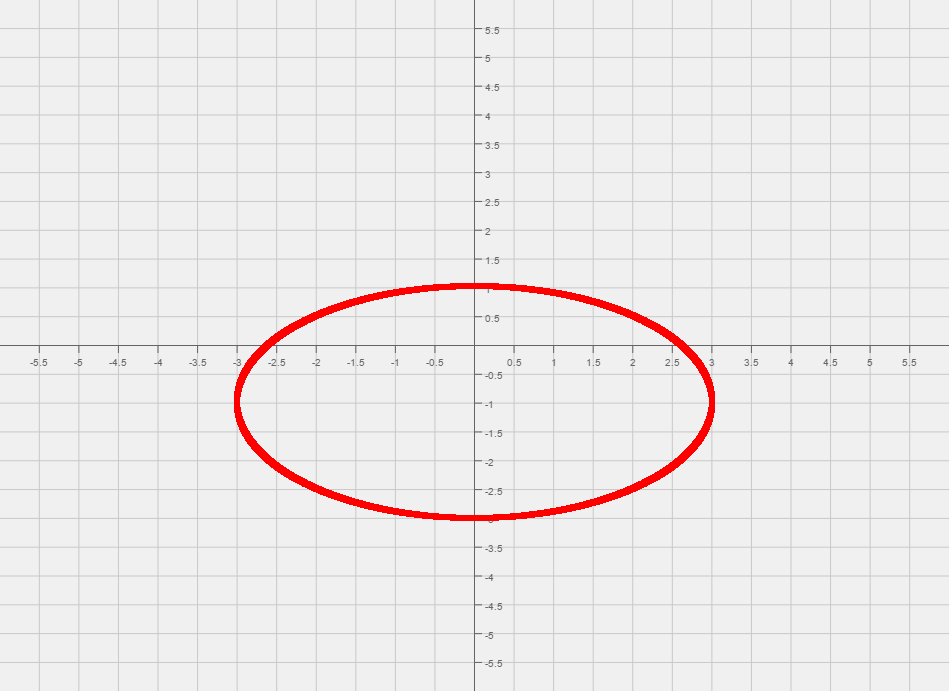Difference between revisions of "005 Sample Final A, Question 16"
Jump to navigation
Jump to search
| Line 10: | Line 10: | ||
|Answer: | |Answer: | ||
|- | |- | ||
| − | |1) Since both x and y are squared it must be a hyperbola or an ellipse. We can conclude that the graph is | + | |1) Since both x and y are squared it must be a hyperbola or an ellipse. We can conclude that the graph is a hyperbola since <math>x^2</math> and <math>y^2</math> have the different signs, one negative and one positive. |
|- | |- | ||
| − | |2) Since | + | |2) Since the <math>y^2</math> is positive, the hyperbola opens up and down. |
|} | |} | ||
| Line 20: | Line 20: | ||
! Step 1: | ! Step 1: | ||
|- | |- | ||
| − | |We start by | + | |We start by completing the square twice, once for x and once for y. After completing the squares we end up with <math>-(x + 1)^2 +4(y - 2)^2 = 4</math> |
| + | |- | ||
| + | |'''Common Mistake:''' When completing the square we will end up adding numbers inside of parenthesis. So make sure you add the correct value to this other side. In this case we add -1, and 16 for completing the square with respect to x and y, respectively. | ||
|} | |} | ||
Revision as of 10:27, 2 June 2015
Question Graph the following,
| Foundations: |
|---|
| 1) What type of function is this? |
| 2) What can you say about the orientation of the graph? |
| Answer: |
| 1) Since both x and y are squared it must be a hyperbola or an ellipse. We can conclude that the graph is a hyperbola since and have the different signs, one negative and one positive. |
| 2) Since the is positive, the hyperbola opens up and down. |
Solution:
| Step 1: |
|---|
| We start by completing the square twice, once for x and once for y. After completing the squares we end up with |
| Common Mistake: When completing the square we will end up adding numbers inside of parenthesis. So make sure you add the correct value to this other side. In this case we add -1, and 16 for completing the square with respect to x and y, respectively. |
| Step 2: |
|---|
| Now that we have the equation that looks like an ellipse, we can read off the center of the ellipse, (0, -1). |
| From the center mark the two points that are 3 units left, and three units right of the center. |
| Then mark the two points that are 2 units up, and two units down from the center. |
| Final Answer: |
|---|
| The four vertices are: |

|




